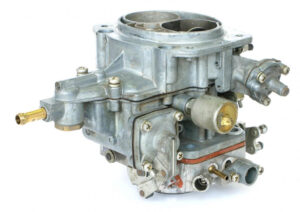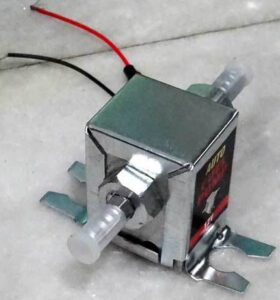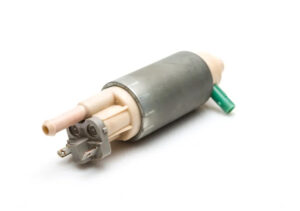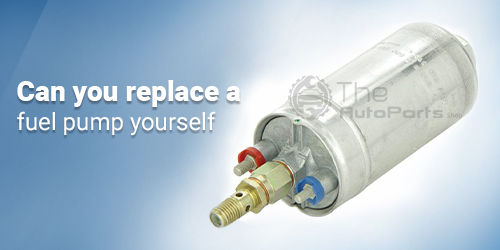Routine maintenance tasks help the vehicle perform optimally. While maintaining the most critical car components, we hardly emphasize parts like the fuel pump that plays a significant role in supplying fuel to the engine and cylinder chambers. The fuel pump extracts fuel from the tanks, which further moves to fuel lines and is transported from fuel filters to the injectors. As the entire process finishes, the engine starts moving. Before the inspection, it is vital to note that it is generally located around or within the fuel tank. Like any other part, this part undergoes issues that become so bothersome that they demand a fuel pump replacement. Therefore, it is vital to determine the purpose of the fuel pump and steps to be followed during fuel pump replacement.
Purpose of Fuel Pump
The main purpose of the fuel pump is to push the fuel from the tank to the injectors. Thus, the fuel pump takes the responsibility of delivering the fuel pump to a place where it is supposed to be. The second primary role of the fuel pump is to form appropriate levels of pressure so that the injectors deliver the appropriate amount of fuel despite the working conditions. If the pressure requirements aren’t kept into account, it could have detrimental effects on engine performance and car emissions.
Common Categories of Fuel Pump
The mechanical pumps were a part of the engine block of the old cars, while the present-day vehicles are incomplete without electric pumps. Let us know about every pump type in detail:
Mechanical Pump

The mechanical pump performs positive displacement using a diaphragm or a plunger. The cyclic process works like this: the pump takes the fuel out, holds it, and then moves it to the carb and engine. The entire process takes place again and again.
Electric Fuel Pump

High pressure is generally maintained using electrical systems rather than mechanical ones. Below are the examples of an electric fuel pump commonly found in present-day cars:
- Intank
- Inline
- Rotary Vane
- Gerotor
Longevity of the Fuel Pumps
Fuel pumps are not a part of scheduled car maintenance and are only replaced when they fail. Therefore, most of the fuel pump assembly replacement takes place after driving 100,000 miles in the vehicle.
Common Fuel Pump Issues

Over time your fuel pump starts experiencing issues. First, start finding the mechanic performing fuel pump replacement near me and eliminate the root cause of the problem. We have compiled a list of common fuel pump issues that you will come across:
Vehicle Not Starting
Several things abstain from the smooth working of your vehicle. Scanty fuel supply is the root cause of the issue and must be checked. The fuel is unable to send fuel to the engine and starting it becomes a hassle.
Noises produced by Fuel Tank
Loud and whirring sounds start coming out from a damaged fuel pump. A low fuel or a contaminated tank can be the underlying cause behind the issue. A fuel tank working normally would produce a low hum while a problematic one produces whirring sounds.
Stalling Vehicle
Even the slightest amount of gas received by the engine doesn’t lead to stalling. Instead, engine overheating is the primary cause of stalling. An old pump gets excessively hot and makes the entire vehicle stall.
Power Loss
Power loss takes place in rare cases; if they do, it is possibly due to a bad fuel pump. For instance, if you are driving in a hilly area and suddenly lose power all of a sudden, it is possibly due to a malfunctioning fuel pump that cannot handle the hill stress.
Decreased Gas Mileage
The gas mileage decreases due to two possible reasons: the fuel pump sends excess fuel to the engine, or the relief valve is unable to stop the fuel flow. Track the fuel efficiency of your car and could possibly be due to the dying fuel pump.
Issues pertaining to a problematic fuel pump mustn’t be neglected and determine the fuel pump cost while purchasing the fuel pump.
Fuel Pump Replacement: Step by Step Guide
Fuel pump assembly replacement has become easier than ever. Just follow the step by step guide mentioned below:
- Disconnect the ground cable from the negative terminal of the battery.
- Have a look at the fuel line present at the gas tank and replace it if it’s leaky or cracked.
- Take the gas tank pressure out as per the instructions mentioned in the car’s manual.
- The clamp connecting the fuel tank hose to the vapor return hose needs to be loosened. The pump must be separated from the hose.
- Do check the hose in case it is cracked or frayed; get a new one.
- Disconnect the fuel line from the carburetor. The line nut and fuel pump fitting must be performed using a wrench.
- Take two attaching bolts out along with the pump. Wipe off any old gasket material present on the mounting surface using a shop rag.
- A coat of gasket sealer is to be applied on both ends of the gasket.
- Install a new pump on the engine. Ensure that the push rod is properly attached to the engine and the fuel pump. In case it comes out, you can apply heavy grease so that it stays intact.
- Start attaching the fuel outlet line coming out of the carburetor. One end is to be attached to the fuel pump, while another one is with the carburetor. The fuel pump fitting must be held in place using a wrench while the other one is used to keep the nut tight.
- Attach the inlet hose with a gas tank and vapor return hose. Ensure that all the clamps are tight.
- Connect the battery ground cable again, start the vehicle and see leaks if any.
Make sure that you are investing in an optimum quality fuel pump. Enter the car’s make, year, and model and find the ideal fuel pump at the most trusted car parts and accessories online store ‘The Auto Parts Shop.’The Auto Parts Shop doesn’t let you compromise on quality and brings products at reasonable rates to you.
The Bottom Line
Fuel pump issues, when left unresolved, lead to engine deterioration. Purchasing a fuel pump has become easier than ever; buy it from a trusted store and follow step-by-step guidelines.
